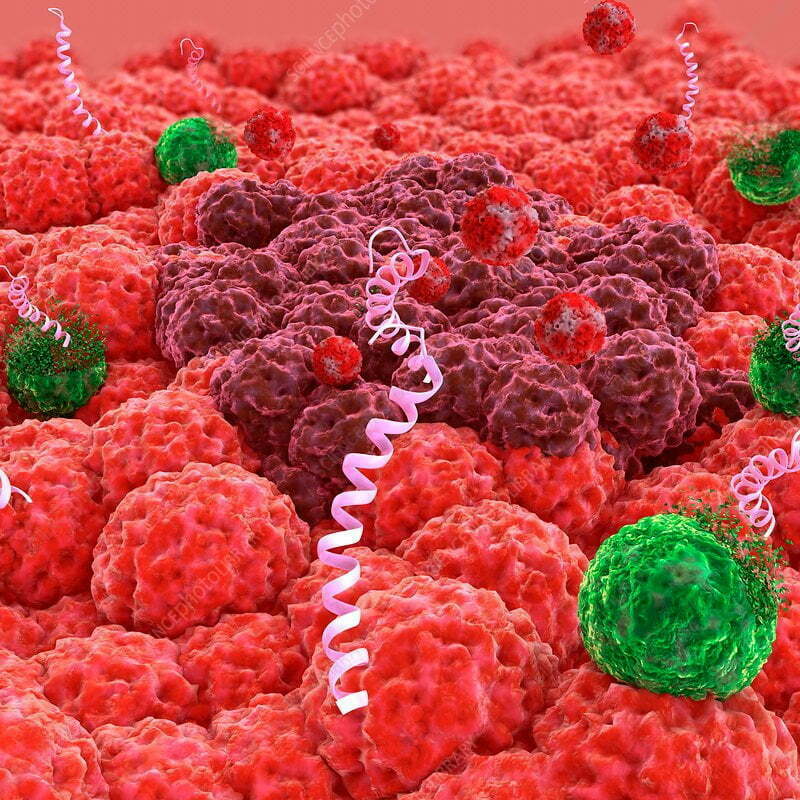What Are Antimicrobial Peptides?
Antimicrobial peptides (AMPs) are a diverse group of small molecules that are produced by a variety of organisms. AMPs typically range in size from 5 to 50 amino acids, and they can be either linear or cyclic in structure. Most AMPs contain cationic (positively-charged) amino acids, which allows them to interact with the negatively-charged cell membranes of bacteria and other microorganisms. This interaction disrupts the integrity of the cell membrane, leading to cell lysis and death.
AMP production is thought to be an evolutionary adaptation that helps organisms defend themselves against infection. In addition to their antimicrobial activity, AMPs can also modulate the immune response and have anti-inflammatory activity. For these reasons, AMPs are being investigated as potential therapeutics for a variety of diseases.

There are many different types of antimicrobial peptides, and they can be classified based on their structure, sequence, or mode of action. Some common examples include defensins, cathelicidins, and magainins.
Defensins are a type of antimicrobial peptide that is produced by nearly all eukaryotic organisms. They are typically linear peptides with between 18 and 30 amino acids. There are two main families of defensins: the α-defensins and β-defensins. Human α-defensins include HD5 and HD6, while human β-defensins include HBD1, HBD2, and HBD3.
Cathelicidins are a type of antimicrobial peptide that is produced by both vertebrates and invertebrates. They typically have a cyclic structure and range in size from 11 to 43 amino acids. The most well-known cathelicidin is LL-37, which is produced by human immune cells.
Magainins are a type of antimicrobial peptide that is produced by frogs of the genus Xenopus. Magainins typically have a linear structure and range in size from 18 to 26 amino acids. The most well-known magainin is Xenopus laevis magainin 1 (XLM1).
AMPs are an important part of the innate immune response, and they play a vital role in protecting humans and other organisms from infection.
How do antimicrobial peptides kill bacteria?
The mechanism of action of antimicrobial peptides (AMPs) is not fully understood, but it is thought that they kill bacteria by disrupting the integrity of the cell membrane. AMPs are cationic (positively-charged) molecules, and they interact with the negatively-charged cell membranes of bacteria. This interaction causes the cell membrane to become destabilized, leading to cell lysis and death.
In addition to their antimicrobial activity, AMPs can also modulate the immune response and have anti-inflammatory activity. For these reasons, AMPs are being investigated as potential therapeutics for a variety of diseases.
Which of the following is a way that antimicrobial peptides are used in the second line of defense?
– Antimicrobial peptides are used to kill bacteria and other microorganisms that have entered the body.
– Antimicrobial peptides are used to modulate the immune response.
– Antimicrobial peptides are used to reduce inflammation.
LL 37 Peptide
LL 37 peptide is a type of antimicrobial peptide. LL 37 has been shown to kill bacteria and other microorganisms, as well as modulate the immune response. Additionally, LL 37 has been shown to reduce inflammation. These properties make LL 37 an attractive candidate for research.
Some potential research applications for LL 37 include:
– treating infections
– reducing inflammation
– boosting the immune system
– treating autoimmune diseases
– cancer therapy
More research is needed to determine the exact role of LL 37 in human health, but the peptide shows promise as a potential treatment for a variety of conditions.
(AMPS) Antimicrobial peptides work by targeting and killing bacteria, viruses, and fungi. One of the most well-known antimicrobial peptides is ll-37 peptide, which is found in humans and animals. LL-37 peptide has a wide range of antimicrobial activity against Gram-positive and Gram-negative bacteria, as well as against some viruses and fungi. In addition, LL-37 peptide also has anti-inflammatory activity and can help to heal wounds.
Antimicrobial peptides are important components of the innate immune system, which is the body’s first line of defense against infection. antimicrobial peptides work by targeting and killing bacteria, viruses, and fungi. One of the most well-known antimicrobial peptides is ll-37 peptide, which is found in humans and animals. LL-37 peptide has a wide range of antimicrobial activity against Gram-positive and Gram-negative bacteria, as well as against some viruses and fungi. In addition, LL-37 peptide also has anti-inflammatory activity and can help to heal wounds.
Explain the role of the toll receptor in producing antimicrobial peptides
The toll receptor is a type of protein that is found on the surface of cells. The toll receptor is involved in the production of antimicrobial peptides. When the toll receptor detects a foreign invader, it triggers the production of antimicrobial peptides. These peptides then work to kill the bacteria or other microorganisms that are causing the infection.
Further research into antimicrobial peptides is important in order to develop new and more effective treatments for infections. Additionally, understanding how antimicrobial peptides work can help to improve our understanding of the innate immune system.



